Reebok 2015 Annual Report Download - page 205
Download and view the complete annual report
Please find page 205 of the 2015 Reebok annual report below. You can navigate through the pages in the report by either clicking on the pages listed below, or by using the keyword search tool below to find specific information within the annual report.-
 1
1 -
 2
2 -
 3
3 -
 4
4 -
 5
5 -
 6
6 -
 7
7 -
 8
8 -
 9
9 -
 10
10 -
 11
11 -
 12
12 -
 13
13 -
 14
14 -
 15
15 -
 16
16 -
 17
17 -
 18
18 -
 19
19 -
 20
20 -
 21
21 -
 22
22 -
 23
23 -
 24
24 -
 25
25 -
 26
26 -
 27
27 -
 28
28 -
 29
29 -
 30
30 -
 31
31 -
 32
32 -
 33
33 -
 34
34 -
 35
35 -
 36
36 -
 37
37 -
 38
38 -
 39
39 -
 40
40 -
 41
41 -
 42
42 -
 43
43 -
 44
44 -
 45
45 -
 46
46 -
 47
47 -
 48
48 -
 49
49 -
 50
50 -
 51
51 -
 52
52 -
 53
53 -
 54
54 -
 55
55 -
 56
56 -
 57
57 -
 58
58 -
 59
59 -
 60
60 -
 61
61 -
 62
62 -
 63
63 -
 64
64 -
 65
65 -
 66
66 -
 67
67 -
 68
68 -
 69
69 -
 70
70 -
 71
71 -
 72
72 -
 73
73 -
 74
74 -
 75
75 -
 76
76 -
 77
77 -
 78
78 -
 79
79 -
 80
80 -
 81
81 -
 82
82 -
 83
83 -
 84
84 -
 85
85 -
 86
86 -
 87
87 -
 88
88 -
 89
89 -
 90
90 -
 91
91 -
 92
92 -
 93
93 -
 94
94 -
 95
95 -
 96
96 -
 97
97 -
 98
98 -
 99
99 -
 100
100 -
 101
101 -
 102
102 -
 103
103 -
 104
104 -
 105
105 -
 106
106 -
 107
107 -
 108
108 -
 109
109 -
 110
110 -
 111
111 -
 112
112 -
 113
113 -
 114
114 -
 115
115 -
 116
116 -
 117
117 -
 118
118 -
 119
119 -
 120
120 -
 121
121 -
 122
122 -
 123
123 -
 124
124 -
 125
125 -
 126
126 -
 127
127 -
 128
128 -
 129
129 -
 130
130 -
 131
131 -
 132
132 -
 133
133 -
 134
134 -
 135
135 -
 136
136 -
 137
137 -
 138
138 -
 139
139 -
 140
140 -
 141
141 -
 142
142 -
 143
143 -
 144
144 -
 145
145 -
 146
146 -
 147
147 -
 148
148 -
 149
149 -
 150
150 -
 151
151 -
 152
152 -
 153
153 -
 154
154 -
 155
155 -
 156
156 -
 157
157 -
 158
158 -
 159
159 -
 160
160 -
 161
161 -
 162
162 -
 163
163 -
 164
164 -
 165
165 -
 166
166 -
 167
167 -
 168
168 -
 169
169 -
 170
170 -
 171
171 -
 172
172 -
 173
173 -
 174
174 -
 175
175 -
 176
176 -
 177
177 -
 178
178 -
 179
179 -
 180
180 -
 181
181 -
 182
182 -
 183
183 -
 184
184 -
 185
185 -
 186
186 -
 187
187 -
 188
188 -
 189
189 -
 190
190 -
 191
191 -
 192
192 -
 193
193 -
 194
194 -
 195
195 -
 196
196 -
 197
197 -
 198
198 -
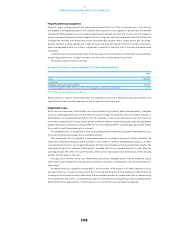 199
199 -
 200
200 -
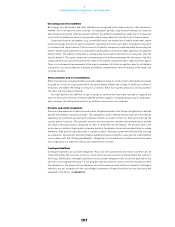 201
201 -
 202
202 -
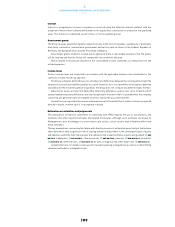 203
203 -
 204
204 -
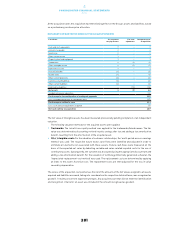 205
205 -
 206
206 -
 207
207 -
 208
208 -
 209
209 -
 210
210 -
 211
211 -
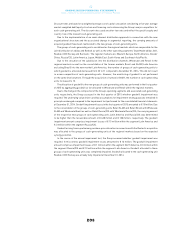 212
212 -
 213
213 -
 214
214 -
 215
215 -
 216
216 -
 217
217 -
 218
218 -
 219
219 -
 220
220 -
 221
221 -
 222
222 -
 223
223 -
 224
224 -
 225
225 -
 226
226 -
 227
227 -
 228
228 -
 229
229 -
 230
230 -
 231
231 -
 232
232 -
 233
233 -
 234
234 -
 235
235 -
 236
236 -
 237
237 -
 238
238 -
 239
239 -
 240
240 -
 241
241 -
 242
242 -
 243
243 -
 244
244 -
 245
245 -
 246
246 -
 247
247 -
 248
248 -
 249
249 -
 250
250 -
 251
251 -
 252
252 -
 253
253 -
 254
254 -
 255
255 -
 256
256 -
 257
257 -
 258
258 -
 259
259 -
 260
260 -
 261
261 -
 262
262 -
 263
263 -
 264
264 -
 265
265 -
 266
266 -
 267
267 -
 268
268 -
 269
269 -
 270
270
 |
 |

CONSOLIDATED FINANCIAL STATEMENTS
Notes
201
4
At the acquisition date, the acquisition had the following effect on the Group’s assets and liabilities, based
on a preliminary purchase price allocation:
NETASSETS OF RUNTASTIC GMBH AT THE ACQUISITION DATE
€ in millions Pre-acquisition
carrying amounts
Fair value
adjustments
Recognised values
on acquisition
Cash and cash equivalents 7 – 7
Accounts receivable 2 – 2
Inventories 0 – 0
Other current assets 1 – 1
Property, plant and equipment 1 – 1
Trademarks 0 31 31
Other intangible assets 0 21 21
Deferred tax assets 1 – 1
Accounts payable (1) – (1)
Income taxes (1) – (1)
Other current provisions (1) – (1)
Current accrued liabilities (3) – (3)
Other current liabilities (2) – (2)
Deferred tax liabilities – (13) (13)
Net assets 339 42
Goodwill arising on acquisition 192
Purchase price in consideration of contingent payments 235
Less: contingent payments in subsequent years (21)
Purchase price settled in cash 213
Less: cash and cash equivalents acquired (7)
Net cash outflow on acquisition 207
The fair value of intangible assets has been measured provisionally pending completion of an independent
valuation.
The following valuation methods for the acquired assets were applied:
•Trademarks: The ‘relief-from-royalty method’ was applied for the trademarks/brand names. The fair
value was determined by discounting notional royalty savings after tax and adding a tax amortisation
benefit, resulting from the amortisation of the acquired asset.
•
Other intangible assets: For the valuation of customer relationships, the ‘multi-period-excess-earnings
method’ was used. The respective future excess cash flows were identified and adjusted in order to
eliminate all elements not associated with these assets. Future cash flows were measured on the
basis of the expected net sales by deducting variable and sales-related imputed costs for the use of
contributory assets. Subsequently, the outcome was discounted using the appropriate discount rate and
adding a tax amortisation benefit. For the valuation of technology (internally generated software), the
‘depreciated-replacement-cost method’ was used. The replacement costs are determined by applying
an index to the asset’s historical cost. The replacement costs are then adjusted for the loss in value
caused by depreciation.
The excess of the acquisition cost paid versus the net of the amounts of the fair values assigned to all assets
acquired and liabilities assumed, taking into consideration the respective deferred taxes, was recognised as
goodwill. It mainly arose from expected synergies. Any acquired asset that did not meet the identification
and recognition criteria for an asset was included in the amount recognised as goodwill.
